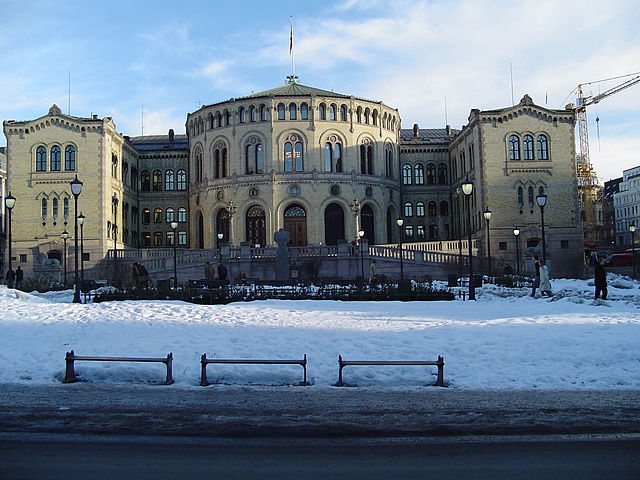Thammasat University students who are interested in big data, data protection, urban development, smart technologies, banking, law, tourism, data management, sociology political science, human rights and related subjects may find a newly available book useful.
Smart Cities in Asia: Regulations, Problems, and Development is edited by Thanh Phan and Daniela Damian.
It is an Open Access book, available for free download at this link:
https://directory.doabooks.org/handle/20.500.12854/84331
As its description on the publisher’s webpage explains,
This open access book examines different aspects of smart cities, including technology, urban development, sustainable development, finance, and privacy and data protection. It also covers a wide range of jurisdictions in Asia-Pacific: Hong Kong, Indonesia, Malaysia, Singapore, Thailand, and Vietnam. The book consists of two main parts. The first part includes general chapters that conceptualize smart cities and provide an overview of these cities’ problems such as privacy and data protection concern. The general chapters also discuss the role of public and private sectors in developing and governing smart cities. The second part encompasses country-specific chapters that examine the concepts addressed in the general chapters in practice by analyzing several specific smart city projects. This book provides researchers and practitioners with some knowledge of a smart city and its implication in the Asia context. The book is designed with some general chapters updating the literature on smart cities for readers who are interested in an overview of this concept. Audiences who are curious about how smart cities are perceived and implemented in some Asian jurisdictions are benefited from country-specific chapters. The book is also helpful to general audiences whose interests lay at the intersection of law, governance, and technology.
As TU students know, a smart city is a technologically modern urban area that uses different types of electronic methods, voice activation methods and sensors to collect specific data.
The TU Library collection includes several books on different aspects of smart cites:
In smart cities, information gained from data collection is used to manage assets, resources and services efficiently; in return, that data is used to improve operations across the city.
This includes data collected from citizens, devices, buildings and assets that is processed and analyzed to monitor and manage traffic and transportation systems, power plants, utilities, water supply networks, waste, crime detection, information systems, schools, libraries, hospitals, and other community services.
Smart cities are defined as smart both in the ways in which their governments harness technology as well as in how they monitor, analyze, plan, and govern the city.
The smart city concept integrates information and communication technology (‘ICT’), and various physical devices connected to the Internet of things (‘IoT’) network to optimize the efficiency of city operations and services and connect to citizens.
Among international smart cities are Singapore, Oslo, New York, London, and Copenhagen.

Criticisms of smart cities are centered on these arguments:
- Especially in low-income countries, smart cities are irrelevant to the urban population which lives in poverty with limited access to basic services. A focus on smart cities may worsen inequality and marginalization, particularly in nations with a widening gap between the rich, who are growing richer, and the poor, who have little if any opportunity for social mobility.
- If a smart city strategy is not planned for people with accessibility problems, such as persons with disabilities affecting mobility, vision, hearing, and cognitive function, the implementation of new technologies could create new barriers. In countries with limited awareness and recognition of disability issues, these problems may be worsened by a smart city that does not include relevant assistance.
- Digitalization can have a significant environmental footprint and there is potential for the externalization of environmental costs onto outside communities.
- Smart city can be used as a slogan only for land revenue generation, especially in the Global South.
- A smart city, as a scientifically planned city, would defy the fact that real development in cities is often haphazard and participatory. In that line of criticism, the smart city is seen as unattractive for citizens as they “can deaden and stupefy the people who live in its all-efficient embrace”.
- The high level of big data collection and analytics has raised questions regarding surveillance in smart cities, particularly as it relates to predictive policing.
- In the smart city environment there are many threats that affect the privacy of individuals. The technology is involved in scanning, identification, checking the current location, including time and direction of movement. Residents may feel that they are constantly monitored and controlled.
The book’s introduction, by the editors, begins:
Asia Pacific, which makes up 60% of the world’s population, is emerging as a dynamic region in the world in terms of economic and technological growth. Some countries in the region are leading performers in information and communication technology (ICT) indicators. Also, East and North-East Asian countries contribute three-quarters of fixed broadband subscriptions in Asia, It is no surprise that Asian cities are also recognized as leaders in designing smart cities that harness digital information to improve operational efficiency, and this book attempts to provide an introduction to some of the context, challenges and developments around smart cities in a number of countries in the region. Singapore, for example, is a city that consistently is ranked as ‘one of the smartest cities’ around, with a unique approach to centrally housing massive amounts of information collected from its citizens with the government instead of with an individual company. Other countries, such as Indonesia, Thailand and Vietnam or Korea, have developed smart cities at different levels and overcame challenges related to creating smart cities in traditional urban settings. Vietnam, for example, applied the smart city concept to governing a historical center in an ancient capital while Thailand is building a smart tourist city on an island.
1.1 Smart Cities: An Overview and General Issues
The concept of smart cities is not new, although it seems like a modern urbanism and sustainability-driven trend. The use of information technology and data for more efficient cities governance has become promising as early as 1970 when Los Angeles became known for its first urban big data project that used computer databases, cluster analysis, and infrared aerial photography to “gather data, produce reports on neighborhood demographics and housing quality, and help direct resources to ward off blight and tackle poverty”. Arguably the first smart city was Amsterdam in 1994 when it created a virtual digital city to promote Internet usage; the trend solidified in the 2000s with large corporations such as IBM and Cisco invested significantly in research and development of projects that used sensors, networks and analytics to help cities run more efficiently.
Continued government and industry investment span off a growing number of smart cities initiatives in Japan (2010), Barcelona (2011), China (2013), and later other cities in Europe, Singapore and Vietnam, just to name a few… While smart cities are now touted as imperative for a sustainable future, the approach is not without challenges: working with existing infrastructures in traditional cities when applying new technologies may be costly and unsuitable for cities with a long history, as described in some chapters in this book.

(All images courtesy of Wikimedia Commons)

